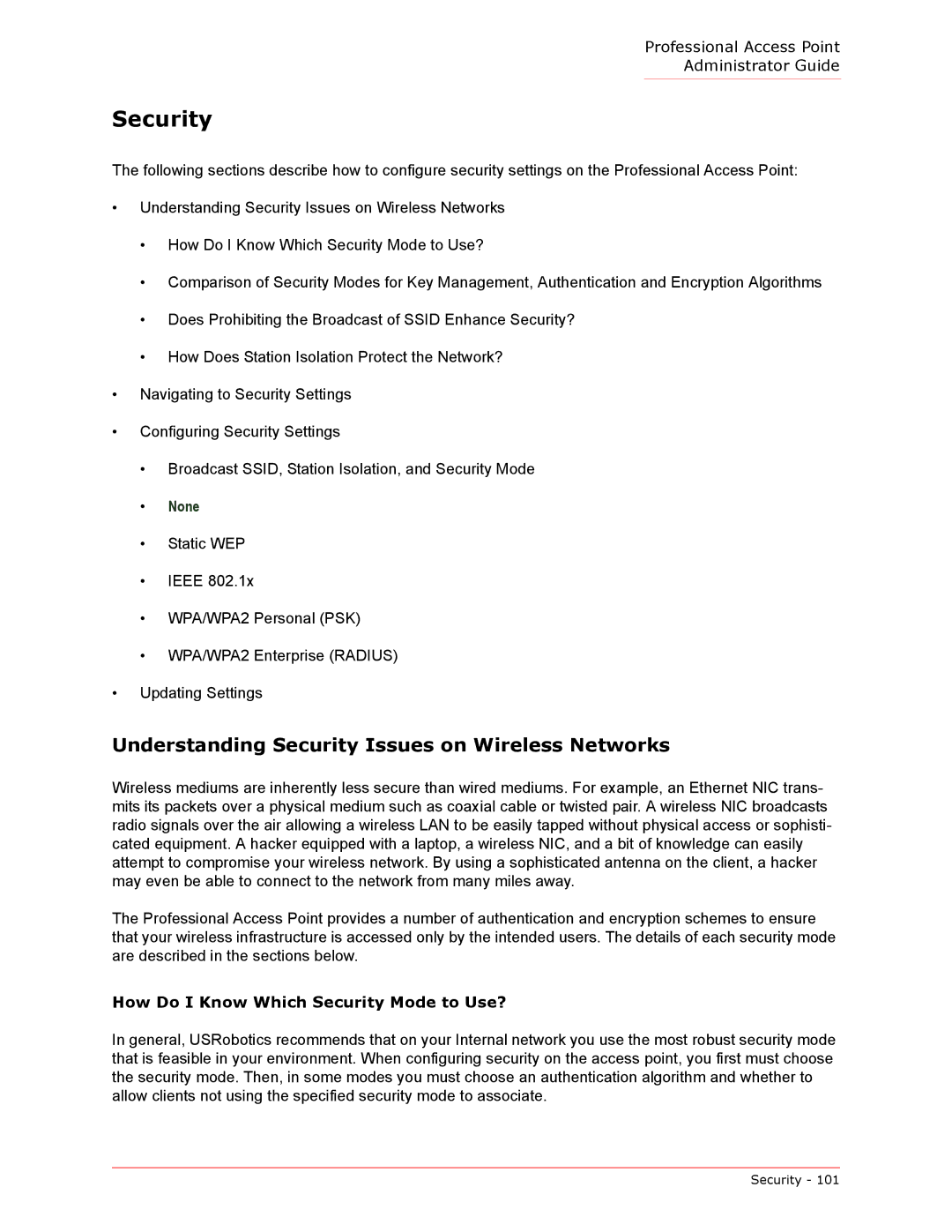
Professional Access Point
Administrator Guide
Security
The following sections describe how to configure security settings on the Professional Access Point:
•Understanding Security Issues on Wireless Networks
•How Do I Know Which Security Mode to Use?
•Comparison of Security Modes for Key Management, Authentication and Encryption Algorithms
•Does Prohibiting the Broadcast of SSID Enhance Security?
•How Does Station Isolation Protect the Network?
•Navigating to Security Settings
•Configuring Security Settings
•Broadcast SSID, Station Isolation, and Security Mode
•None
•Static WEP
•IEEE 802.1x
•WPA/WPA2 Personal (PSK)
•WPA/WPA2 Enterprise (RADIUS)
•Updating Settings
Understanding Security Issues on Wireless Networks
Wireless mediums are inherently less secure than wired mediums. For example, an Ethernet NIC trans- mits its packets over a physical medium such as coaxial cable or twisted pair. A wireless NIC broadcasts radio signals over the air allowing a wireless LAN to be easily tapped without physical access or sophisti- cated equipment. A hacker equipped with a laptop, a wireless NIC, and a bit of knowledge can easily attempt to compromise your wireless network. By using a sophisticated antenna on the client, a hacker may even be able to connect to the network from many miles away.
The Professional Access Point provides a number of authentication and encryption schemes to ensure that your wireless infrastructure is accessed only by the intended users. The details of each security mode are described in the sections below.
How Do I Know Which Security Mode to Use?
In general, USRobotics recommends that on your Internal network you use the most robust security mode that is feasible in your environment. When configuring security on the access point, you first must choose the security mode. Then, in some modes you must choose an authentication algorithm and whether to allow clients not using the specified security mode to associate.
Security - 101
